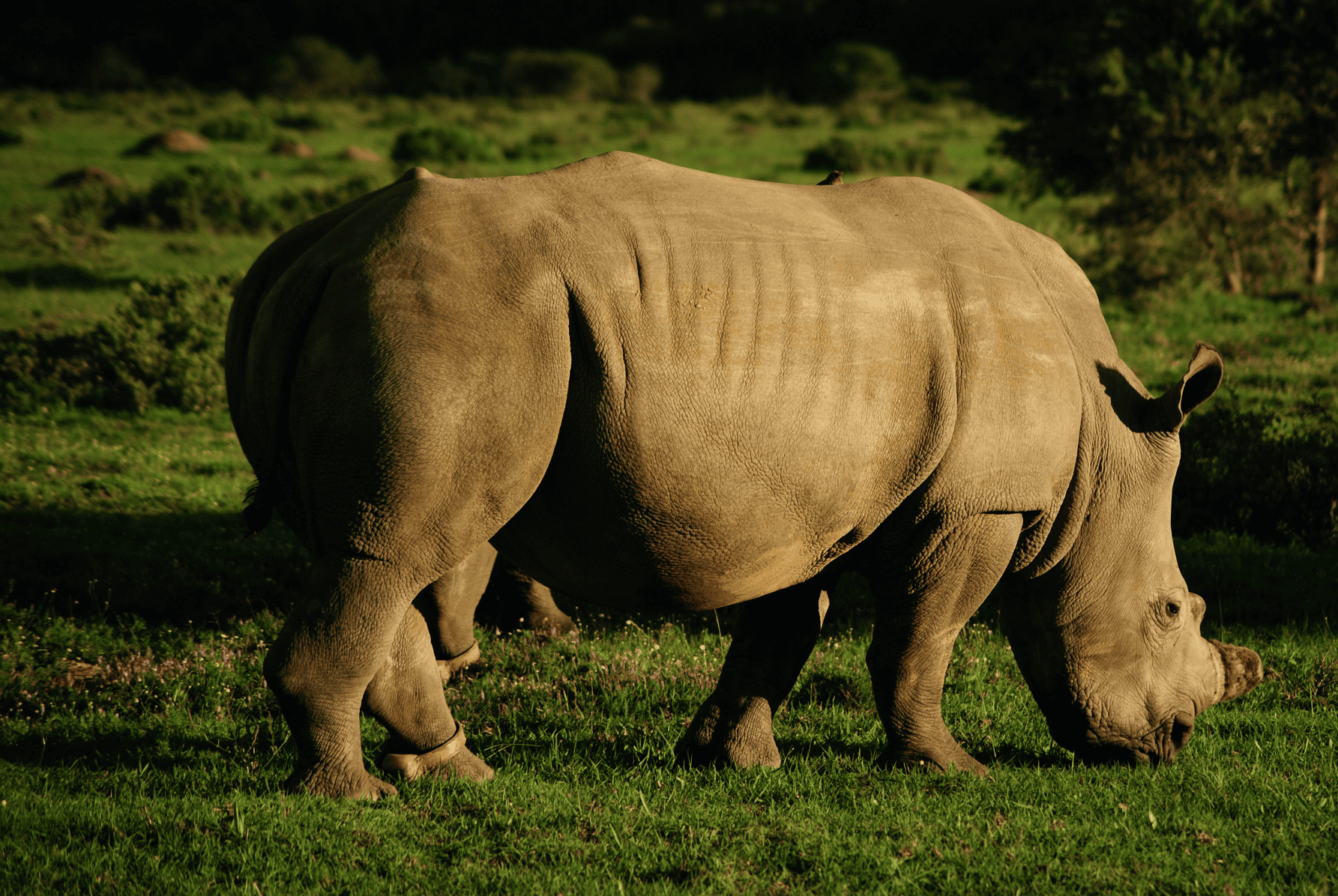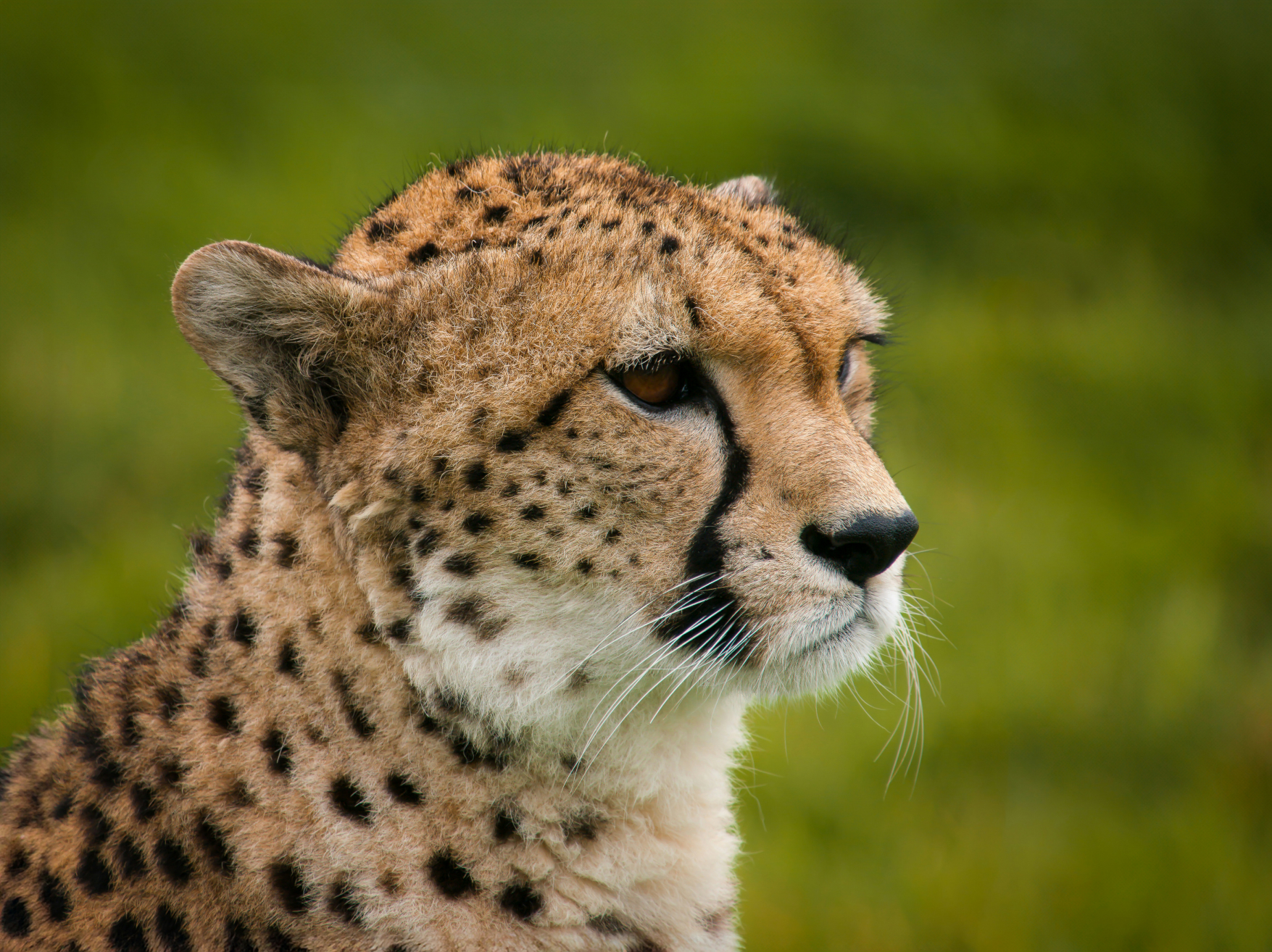The lion, often referred to as the "King of the Jungle," is a majestic symbol of strength, power, and pride. Despite its regal title, lions are not jungle dwellers but thrive in the open savannas and grasslands of Africa, with a small population inhabiting the Gir Forest in India.

The rhinoceros, with its massive size and iconic horn, is one of nature’s most awe-inspiring creatures. Found in Africa and Asia, rhinos inhabit grasslands, savannas, and tropical forests, where they play a critical role in shaping their ecosystems. These giants are symbols of strength and endurance, representing the ancient ties between modern wildlife and their prehistoric ancestors.
Rhinos are herbivores, feeding on grasses, shrubs, and tree leaves. Their grazing habits help maintain the balance of vegetation, preventing overgrowth and supporting the habitats of smaller animals. Despite their imposing size and armor-like skin, rhinos are surprisingly gentle and solitary creatures, spending much of their time grazing or wallowing in mud to cool off and protect their skin from insects.

Few animals command as much awe and admiration as the lion. With its golden coat, piercing eyes, and flowing mane, the lion is a universal symbol of strength, courage, and majesty. Found across Africa and a small part of India, lions are the apex predators of the savannas, ruling over vast territories with authority and grace.
"I’ll never forget the moment I saw a jaguar in the wild during my trip to South America. Its powerful, graceful movements left me in awe, and its piercing gaze felt like it could see right through me. It was an incredible experience to witness such a majestic animal in its natural habitat. Seeing this beautiful predator reminded me of how important it is to protect the places they call home. Truly a once-in-a-lifetime experience!"

"During my visit to the coast, I watched a group of seals basking on the rocks and diving into the waves. They were so playful and curious, coming close to the shore as if they were welcoming us into their world. It was fascinating to see how agile they were in the water and how social they seemed with each other. This experience made me appreciate the beauty of marine life and the need to preserve our oceans. It was pure magic!"

"I was hiking in the wilderness when I spotted a black wolf in the distance. It was breathtaking! Its sleek, dark coat shimmered in the sunlight, and its posture exuded both strength and mystery. The wolf stood still for a moment, almost as if observing us, before gracefully disappearing into the trees. It was a rare and humbling experience that left me speechless. Seeing such a magnificent creature in its natural habitat was a dream come true."

As the human impact grows, the echoes of wildlife grow quieter. It’s a call to action for us to protect these voices, ensuring that the wilderness continues to echo for generations to come.
The distinct calls of animals echo through forests, mountains, and plains, carrying messages of identity, warning, or love. These calls connect creatures across vast landscapes.
WildLife
Animal sounds are often described as echoes of the wild because they symbolize the life and activity within untamed nature. These calls, howls, and songs serve as a form of communication, marking territory, attracting mates, or warning of danger. They remind us of the vibrant ecosystems where every sound has meaning and purpose.
Animals adapt to their environments through a variety of strategies. Physical adaptations, such as the thick fur of polar bears for insulation or the long legs of deer for swift movement, help them survive harsh conditions. Behavioral adaptations, like migration or hibernation, allow animals to respond to seasonal changes. Physiological changes, such as the ability of seals to hold their breath underwater for extended periods, demonstrate the incredible ways wildlife thrives in diverse habitats. These adaptations are key to their survival and a testament to nature's ingenuity.
Predators like jaguars and black wolves are apex species, meaning they sit at the top of the food chain. They regulate the populations of prey animals, such as deer and rodents, preventing overpopulation and protecting vegetation from being overgrazed. This balance ensures that the entire ecosystem remains healthy and diverse. Additionally, predators often contribute to the natural selection process, targeting weaker or sick animals, which helps maintain the genetic health of prey populations. Their presence is a vital indicator of an ecosystem's overall health and stability.
Protecting wildlife and their habitats ensures the survival of countless species and the preservation of biodiversity. It also helps maintain the delicate balance of ecosystems, which humans depend on for resources like clean air, water, and food. Safeguarding wildlife allows the echoes of the wild to continue inspiring future generations.